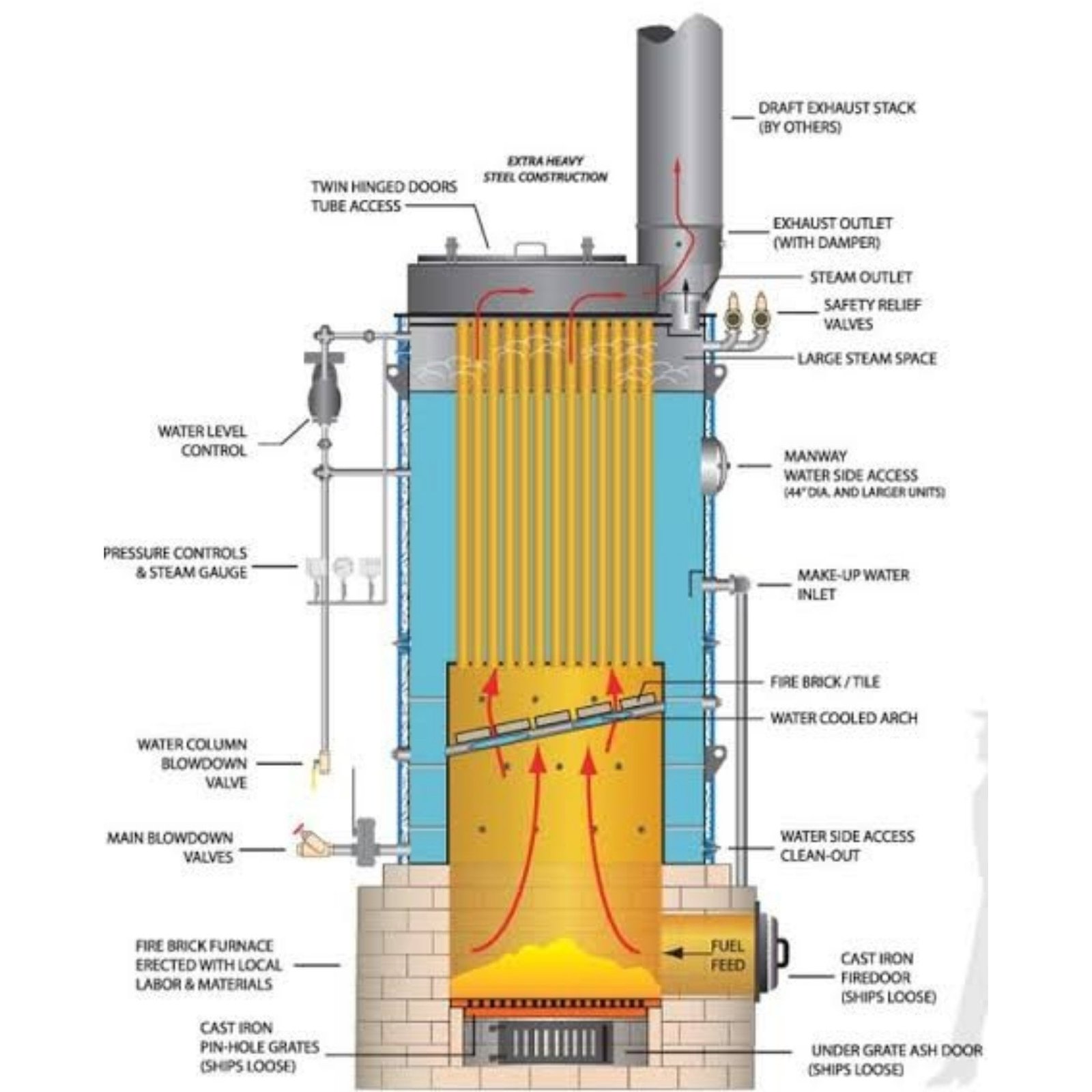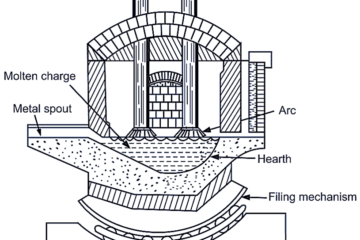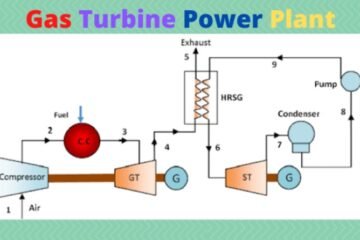Boiler mountings are a set of safety devices fitted on boiler for its protection and for complete control of the steam generation cycle.
The above and below figure shows you Different Boiler mountings fitted on boiler.
As we know that Boilers have a working pressure of 2-5 bars and it can even go higher with big industry.
These have been added onto the boiler performing different functions and showing different parameters to prevent the boiler from malfunctioning, control various parameters and also to assess the present condition of the boiler.
Boiler mountings list are :-
- Main Steam Stop Valve
- Auxiliary Steam Stop Valve
- Safety Valve
- Water level gauge glass
- Air Vent Cock
- Feed check Valve
- Pressure gauge connection
- Blow Down Valve
- Scum Blow Down Valve
- Sampling Connection
- Whistle Valve
- Low Level Alarm
- Soot Blower
- Automatic Feed valve Regulator
- Manhole
- Mud box
- TDS Sensor and Sample
Below mentioned Details explanation of all mountings functions with locations image.
What is Boiler Mountings ?
These are a safety instrument installed for safe boiler operation.
Or
It is the parts of the system that are mounted over the boiler’s own body for boiler protection and for complete control of the steam generation cycle.
The machinery prevents harm to the boiler from itself due to extremely high pressure, steam back flow, vacuum shell collapse, unregulated steam pressure, low water, pumping back flow and dry running respectively.
Functions of Boiler Mountings
These are the fittings that are mounted on the boiler for proper operation.
These include the water level indicator, pressure, gauge, safety valve, etc. It may be noted that the boiler can not operate safely without mounting.
Why Mountings are essential in boiler ?
These are essential in boiler because to run the boiler in safe operation.
Different Boiler Mounting and their functions
Boiler mountings are as follows :-
1) Main steam Stop valve:
- Location: It is usually fitted to the highest part of the shell by means of a flanges.
- Function: a) To control the flow of steam from the boiler to the main steam pipe. b) To shut off the steam completely when required
- The steam produced in the boiler is provided by this valve to the ship’s system.
- It is generally a non-return valve type directly installed on the steam space of boiler shell’s .
- The body is made of cast iron and the valve seat is made of gun metal.
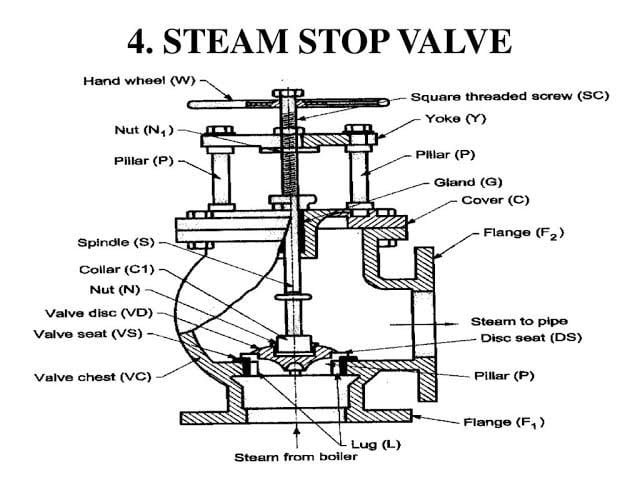
2.Auxiliary steam Stop Valve:
- A separate steam line provided by the boiler for the small auxiliary system is supplied via this valve in most of the steam system on vessels.
- The valve is smaller in size and is generally non-return type.
3) Safety valve:
- Location: This Boiler mountings is attached to the steam chest
- Function: To blow off the steam for preventing explosions when the pressure of the steam inside of the boiler exceeds the working pressure.
- Safety Valve generally used are of Spring loaded safety valve.
- In case of unsafe excess pressure inside the boiler, the security valve is used to release the excess pressure.
- Before installation, the valve’s lifting pressure is set and locked in the presence of a surveyor so that it does not change later.
- In general, safety valves are mounted in pairs.

4) Water level gauge glass:
- Location:-This fittings may be seen in front of the boiler.
- Function: This Boiler mountings fitted to indicate the water level inside the boiler.
- gauge glasses are also installed in pairs to manually monitor the water level inside the boiler tank.
- The construction of the gauge glass is chosen on the basis of the boiler pressure.

5) Air Vent Cock /Air release valve or boiler vent:
- Location:-This valve is fitted in headers, boiler drums, etc.
- Function:- to prevent boiler imploding when depressurized or when steam pressure is intially increased.
The word implosion is contrary to an explosion.
- The pressure inside the boiler will decrease sufficiently below atmospheric pressure in this situation to prevent the shell to buckle inward,this Boiler mountings are required.
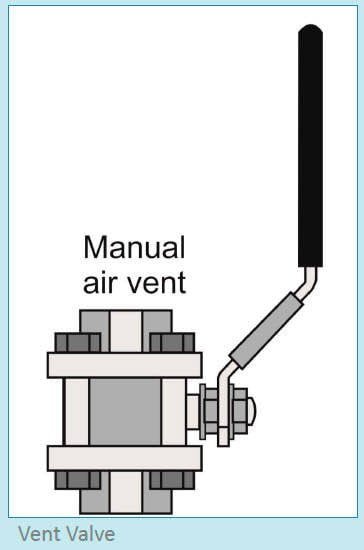
6) Feed check valve and control v / v:
- Location: It is fitted to the shell slightly below the normal water level of the boiler. It is a non return valve, fitted to a screwed spindle to regulate the lift.
- Function: To regulate the supply of water, which is pumped into the boiler by the feed pump.
- This valve controls the supply of steam as required and is installed after the stop valve in both the main and aux steam lines.
- They are non-return valves with visible sign of open and close positions.

7) Pressure gauge connection:
- Location: It is fixed in front of the boiler.
- Function: To measure the pressure of the steam inside of the steam boiler.
- This pressure gauge can be installed in a super heater, boiler drum and wherever it is essential to read the pressure reading.
- Pressure gauges generally used are of Bourdon type
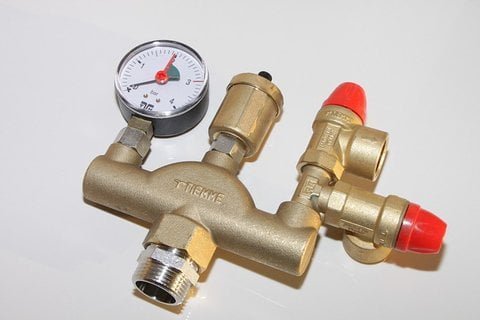
8) Blow-down valve:
- Location: Blow Down is an important Boiler Mountings,which is located at the bottom of the boiler.
- Function: To empty the boiler whenever required & To remove the mud, scale or sediments accumulated at the bottom of the boiler.
- It is used when chloride levels become very high to empty a boiler entirely for cleaning purposes or to treat the boiler’s water.

You can also read about fresh water generator
9) Scum blow down valve:
- Location: This Boiler Mountings is fitted to the crown plate of the furnace or the fire box.
- Function: To put off the fire in the furnace of the boiler when the level of water in the boiler falls to an unsafe limit and thus avoids the explosion which may place due to overheating of the furnace plate.
- A shallow dish type system equipped at ordinary water level that enables floating impurities to blow down, oil foaming, etc. from the surface of the water.
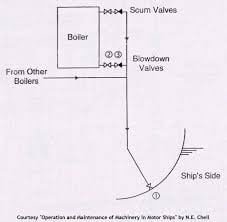
10) Sampling connection /Salinometer Valve :
- Location:-a sampling water cock arrangement is generally equipped with a cooler in sequence so that water samples can be collected at any moment for the testing of feed water.
- Function:- For salinity tests of water
11) Whistle valve:
- If a steam whistle is provided in the ship, steam is supplied directly from the boiler,via a small non-return valve form known as a whistle valve.
12) Low Level alarm:
- Function:- an apparatus used to trigger low water level audible conditions.
13) Soot blowers:
- Function:-Required for soot blowing and pipe surface combustion products. It is operated by steam or compressed air.
14) Automatic feed water regulator:
- Location:-a device that is vital and fitted into feed line
- Function:-Automatic feed water regulator is one of the important boiler mountings to ensure the appropriate level of water in all load circumstances. In boilers with high evaporation rate, multiple feed element water control system is used.
15) Manhole:
- Function:-The boiler is fitted with multiple manhole gates enabling inspection, cleaning and maintenance of boiler tubes and inner components by the crew.
- Location:-Usually one gate is fitted in the steam drum and one in the water drum.
16) Mud box:
- Function:-the mud box in the boiler is used to collect mud (muddy impurities) from the water drum
- Location:-Fitted at the bottom of the water drum.
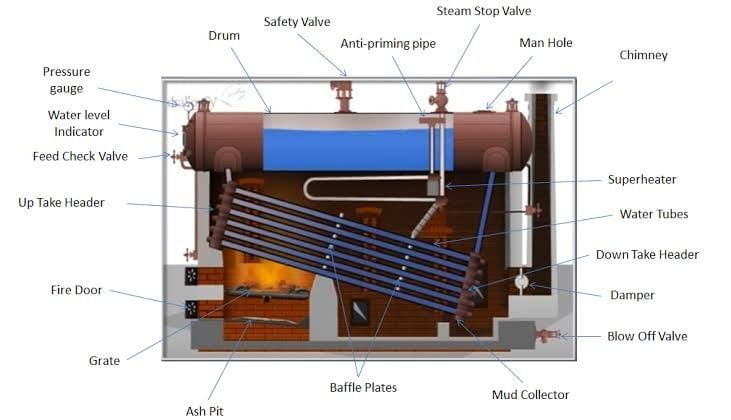
17) TDS Sensor and Sample:
- Function:-most modern boilers are now equipped with this system for continuous monitoring of total dissolved solids in boiler water. The sensor compares the true value to the set point, and an audio-visual alarm is given if the value is on the higher side. A manual blowdown to introduce fresh feedwater into the system to reduce the total dissolved solids.

Difference Between Boiler Mountings and Accessories
◆ Boiler accessories
- Accessories are auxiliary elements Needed for proper boiler operation And to improve the efficiency of it.
- They are integral components of the boiler, but they are not mounted on it.
- Control fluid parameters outside of the boiler.
- These are not the essential parts of Boiler, without which the boiler can work with a lower efficiency.
Examples: Super heater, Feed pump,
Injector, Economiser, Steam separator, Air preheater, etc.
◆ Boiler Mountings
These mountings are components used to ensure the protection of the boiler.
- They are usually mounted on the surface of the boiler.
- Monitor fluid parameters inside the shell of boiler.
- These are the integral part of the boiler, without which it is difficult to operate the boiler.
Examples: Pressure gauges, Water level indicator, Safety valves, Stop valve, Fusible plug, Blow off cock, etc.
We have learn everything about boiler mountings now we understand Boiler Accessories in details.
Also Read : Difference between 2 stroke and 4 stroke engine
What is Boiler Accessories ?
Boiler Accessories are those devices which are installed with a boiler and its neighbouring area to increase the efficiency of the boiler. These are not the essential part of the boiler and
thus without installing these devices, the boiler operation can be accomplished though
at a lower efficiency.
Boiler Accessories
1.Feed Pump:-
- Feed pump used to feed the high-pressure water in the boiler.
- The pressure of steam inside the boiler is high, so the pressure of the feed water must be increased for smooth operation before it reaches the boiler.
- In general, the pressure of the feed water is 20 % higher than that of the boiler pressure.
- The feed pump can be of a centrifugal or reciprocating type.

2.Soot Blower:-
- During combustion, soot deposits deposits on the internal tubes of furnace and the gas passes are plugged.
- Ultimately,the soot deposited inside furnace decreases boiler efficiency.
- Soot blower is then used to remove soot from the tubes in order to prevent gas passes from being plugged.

3.Injector:-
- The function of the injector is the same as that of the feed pump; it is used where space is not available for installation of the feed pump.
- Kinetic energy of steam is used,in an injector to increase the pressure and velocity of the feed water in a convergent-divergent nozzle.
Advantage:-
- Simplicity,
- Compactness,
- High thermal efficiency,
- Absence of dynamic part.
Disadvantages:
- Low pumping efficiency,
- Difficulty in operation under extreme variation in steam pressure.
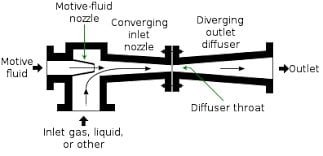
Note:- If large amounts of feed water involving feed pump are preferred over the injector because they are more reliable and require less attention.4.Economiser:-
- Economiser is a heat exchanging device (heat exchanger ) that extracts some of the heat from exhaust or flue gas before leaving the chimney and uses it to heat feed water.
- Feed water passes through the tubes and exhaust flue gas flows outside of the pipe. Economiser improves the boiler economy.
- The economizer units are generally placed between boiler and chimney.
Advantage:-
- Stress is reduced due to uneven expansion because the temperature range between boiler parts is decreased.
- fuel consumption savings (almost 15 to 20 percent fuel saving ).
- Increases overall efficiency.
- The evaporative capacity of the boiler has been increased I.e It increases a boiler’s steam generating capacity as it shortens the time required to convert water into steam.
- Protection against the cooling of the metal boiler.
- Prevents the formation of scales in boiler water tubes, scales forms in economiser tubes that can be easily cleaned

5.Superheater:-
- Superheater raises saturated steam temperature without elevating its pressure.
- It consists of a small bundle of tubes.
- It is installed in the path of hot flue gase of furnace.
- Inside the heater tubes saturated steam passes and hot flue gasses pass outside the tubes.
- Thus heat transfer occurs from hot flue gases to saturated steam and increases the temperature of the steam without increasing its pressure.
- For this purpose, convection superheaters and radiation superheaters are used.
- The change in steam temperature depends on the position of the superheater, the temperature of the hot flue gases, the configuration of the superheater and the flow of steam.
- If, with the help of a superheater, the temperature of saturated steam increases to 100C then 1 per cent fuel savings can be achieved.
Advantage :-
- Steam consumption reduced.
- Protection from erosion of turbine.
- Losses due to condensation of steam in the cylinders and pipes are reduced.
- increases plant efficiency

6.Air Preheater:-
- Air preheater used to recover heat from flue gases of exhaust.
- It installed between the chimney and economizer. Through preheater,Air for combustion purpose passes .
- It raises the temperature of the combustion air with the help of flue gases of exhaust.
- Air passes through the heater tubes and flue gas passes over the outside of the heater tubes.
- Thus, the transfer of heat from flue gasses to the air required for combustion takes place
If the temperature of the combustion air increases up to 1000F with the help of an air preheater, 2.3 to 2.6 per cent of the fuel can be saved.In some conditions, 5 % to 10% of fuel savings can also achievable.
Advantage:-
- Evaporative capacity per kilogram of fuel increases.
- Increases 2 percent of the boiler efficiency for each 35-400C increase in air temperature.
- Gives better burning with less smoke, soot, and ash.
- Allows low-grade fuel to burn with less excess air.

7.pressure Reducing valve :-
- The function of pressure reducing valve is to maintain pressure constant on its delivery side irrespective pressure of boiler.
8.Steam Separator:-
- In a turbine,the use of wet steam in is uneconomical; hence a steam separator,which is also known as a moisture separator is used.
- steam separators function is to remove water droplet from steam.
- It is installed on the main steam pipe in the boiler.
It is important to remove water reside steam because:
- Water droplet in steam decrease the thermal efficiency.
- Water may accumulate in cylinder and cause hydrostatic lock which damages the engine.
- In thermal power plants, high-speed steam water droplets from the nozzles damage the turbine blades.

In accordance with the operating principle, they are classified as Impact or Baffle type, Reverse current type, Centrifugal type.
We have seen above Boiler mountings and Accessories in details .
Now,we see Alarms and Trip Fitted on Boiler.
Read About : Crankcase Explosion | Prevention and safety
Marine Boiler Alarms and Trips
- Low water level: since water is converting into steam, therefore water consumption occurs, if the level is not manually controlled, a stage will occur where the water level will drop to a certain level (L2), and the alarm will be seen and heard.
- Low low water level alarm :-If the alarm at level L2 is not recognised, the level will drop further to the level L1, and the burner will stop firing to prevent the boiler shell from being damaged due excessive heat from the flame burner.
- High water level:- The alarm will sound when the water consumption does not match the intake of feed water by means of a feed water pump. Water has reached the H1 level.
- High high water level:-If the water at level H1 is not recognised, the feed water pump stops at level H2, therefore cutting the water supply to the boiler drum, the feed pump stops preventing the boiler drum from the excessive hydraulic pressure exerted by the feed water, which may cause the boiler drum to explode (at least weakens it).
- Low steam pressure :-This alarm indicates different cases such as the burner does not firing up to the level, thus feed water is less in the boiler and therefore less pressure.
- High steam pressure:-Alarm with Trip to burner to avoid damage to the steam drum due to excessive steam pressure.
- Low feed water pressure :-Due to a certain difficulties the feed-pump#1 has difficulty generating ample pressure to push the water inside the boiler drum, therefore the stand-by feed-pump starts to maintain the pressure of the feed-water. (Remember that there is a feed check valve between the water pump and the drum.)
- Low fuel oil pressure :-The pump for boosting the Fuel O il pressure for injection does not produce enough pressure due to a variety of factors, so a standby fuel oil pump is started to supplement the loss of pressure due to the injection of fuel into the furnace. It should have enough pressure to allow the fuel to atomize fully.
- Low fuel oil temperature:-Low fuel temperature contributes to a significant amount of sunburned fuel accumulation in the furnace, so there is a high risk of explosion.
- High fuel oil temperature:-Since, the Fuel oil should be within favorable temperature condition, so heating up of oil give off Alarm.
- Low combustion air pressure: For Complete combustion, (F.D fans )Force Draft fans are used to supply combustion air to the boiler burner, but when there is an alarm for low combustion air pressure, it should be noted that there is no damage to the fan blades and no obstruction to the intake of combustion air.
- Low atomizing steam pressure: As an atomizing medium,if steam is used, this trip will occur if there is any obstruction in the hole/passage way of steam supply or the pipeline having supply steam.
- Flame failure : [NOTE: This is Overridden when boiler is starting up/firing up ] This trip occurs for preventing the fuel accumulation in the furnace, which may become the source of explosion if not properly purged.
- Burner not in the firing position/position of fire: since the burner is not in the position of fire, one case may be because the arc does not strike between the electrode and the fuel supply to prevent the accumulation and explosion, this trip is initiated.
Through this Article,I try to Clear Your All Doubt or Questions related Boiler Mountings.
Also Read : Bedplate | Function|Maintenance
Beside it, you also learn
Boiler Accessories and Boiler Alarms and Trips.
Other Auxiliary Machineries On Ships
People also ask (FAQ )
Is A Superheater Boiler mountings ?
Answer is No.
Explanation:- Superheater is a boiler accessories.
Mountings are a water level indicator, a safety valve, a pressure gauge, etc. It should be noted that without the mounting, the boiler cannot work safely. The boiler accessories are devices that form an integral part of the boiler but are not mounted on it. They include superheaters, economizers, feed pumps, etc.
What is function of boiler mountings?
For the safety of the boiler and for complete control of the process of steam generation.
Check Out Other Important Topics

